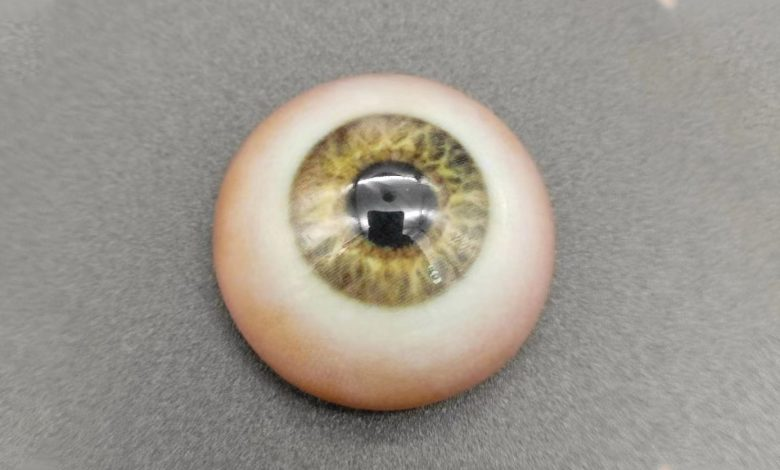A Moorfields Eye Hospital NHS Foundation Trust patient was the first person in the world to be supplied solely with a fully digital 3D printed prosthetic eye on 25 November 2021. He first tried his eye on 11 November alongside a traditional acrylic prosthetic. By going home on 25 November with just his printed eye, he is the first patient to use a 3D printed eye as their sole prosthetic.
A 3D printed eye is a true biomimic and a more realistic prosthetic, with a clearer definition and real depth to the pupil. Unlike traditional methods, it uses scans of the eye instead of an invasive mold of the eye socket, so difficult for children that they can need a general anesthetic.
Crucially, the production process is much faster. Traditional acrylic prosthetic eyes are hand-painted and take about six weeks to complete. With 3D printing, once a scan has been taken, the prosthesis can be printed within two and a half hours. It is then sent to an ocularist to finish, polish and fit. The whole process takes just two to three weeks.
Manufacturing on Demand
Steve Verze, the first patient, is an engineer in his 40s from Hackney.
“I’ve needed a prosthetic eye since I was 20, and I’ve always felt self-conscious about it,” said Steve. “When I leave my home, I often take a second glance in the mirror, and I’ve not liked what I’ve seen. This new eye looks fantastic and, being based on 3D digital printing technology, it’s only going to be better and better.”
“We are excited about the potential for this fully digital prosthetic eye,” said Professor Mandeep Sagoo, consultant ophthalmologist at Moorfields Eye Hospital and professor of ophthalmology at the NIHR Biomedical Research Centre at Moorfields Eye Hospital and UCL Institute of Ophthalmology. “We hope the forthcoming clinical trial will provide us with robust evidence about the value of this new technology, showing what a difference it makes for patients. It clearly has the potential to reduce waiting lists.”
* This article is reprinted from 3D Printing Media Network. If you are involved in infringement, please contact us to delete it.
Author: Davide Sher


Leave A Comment